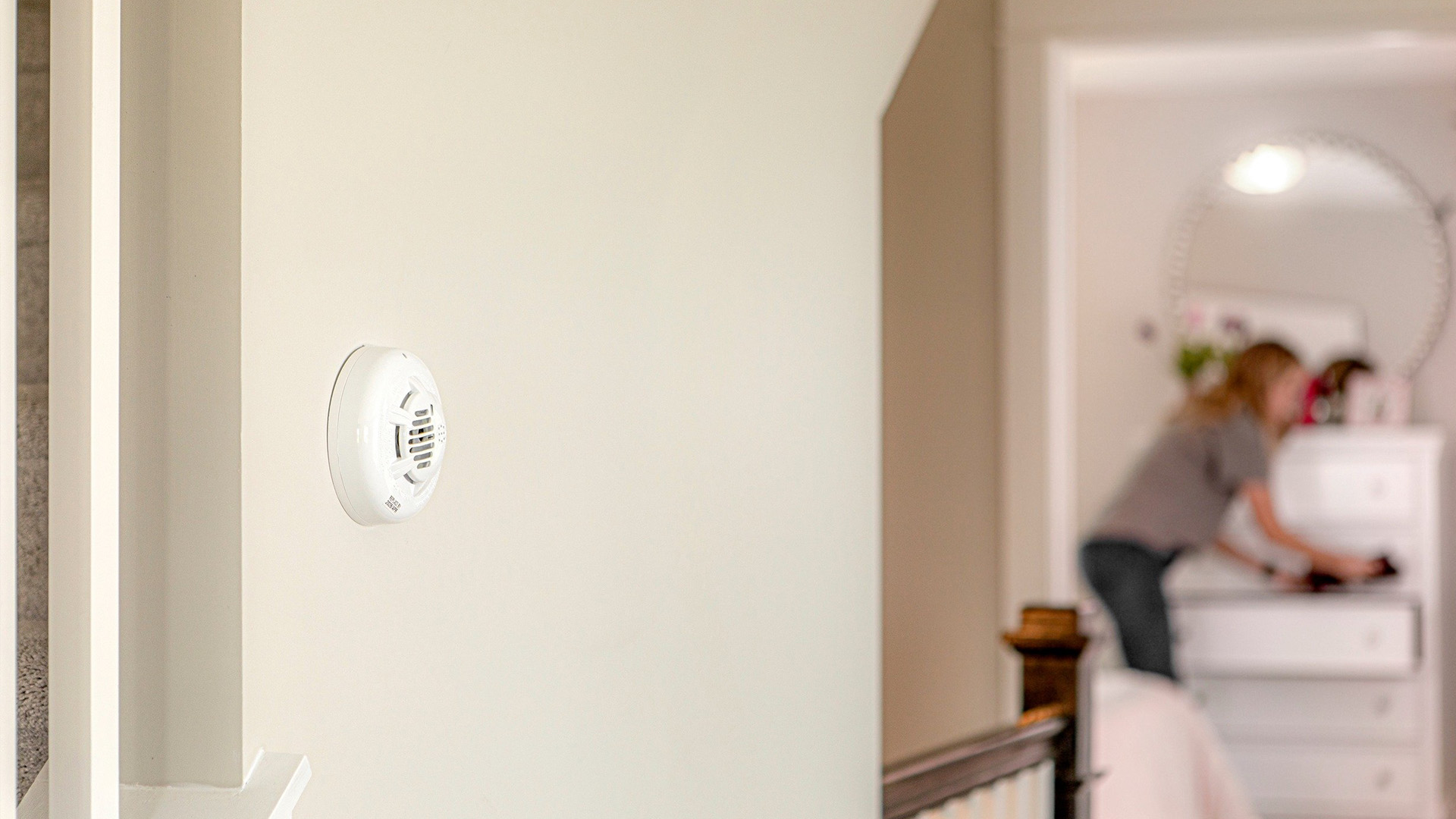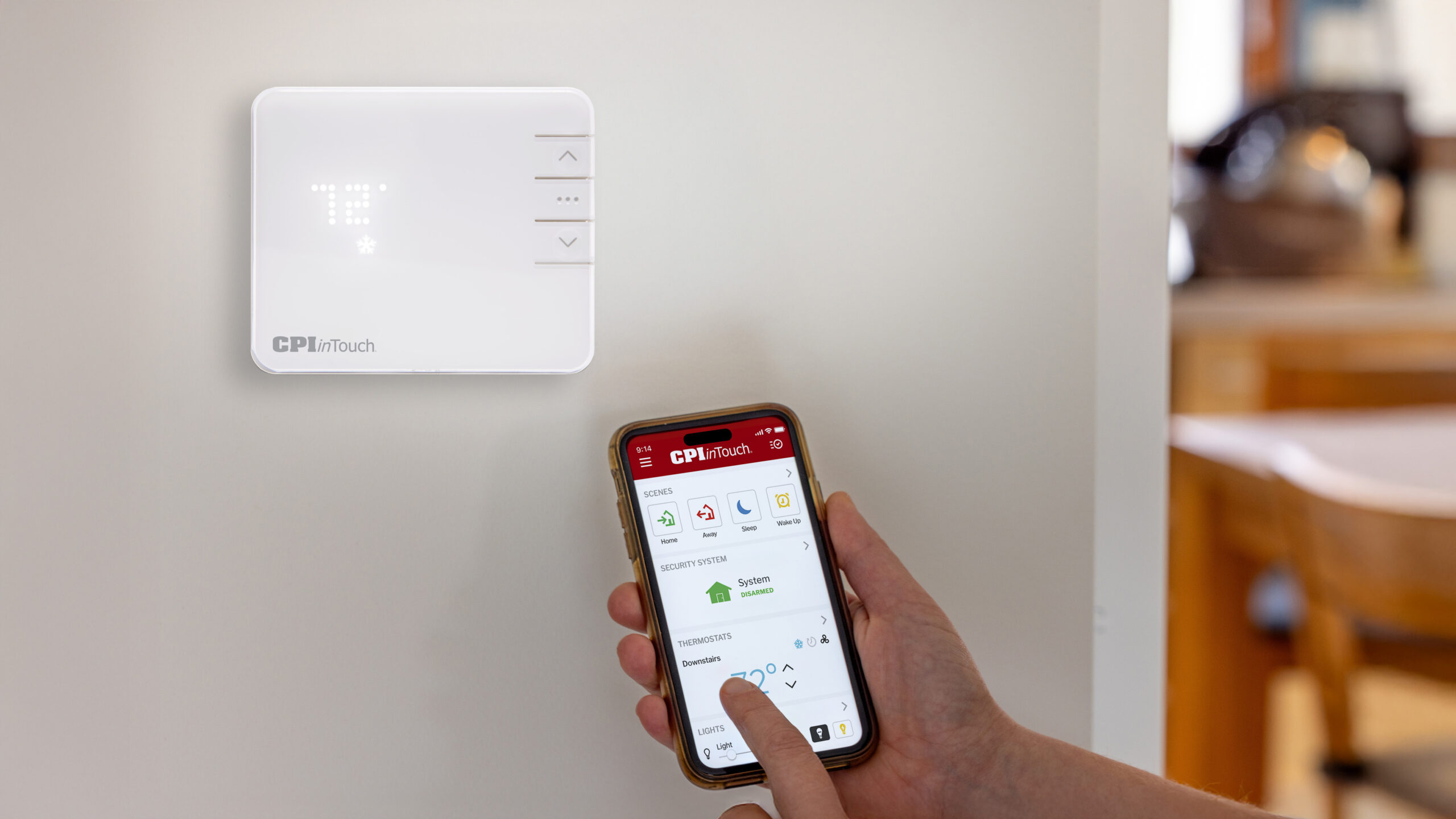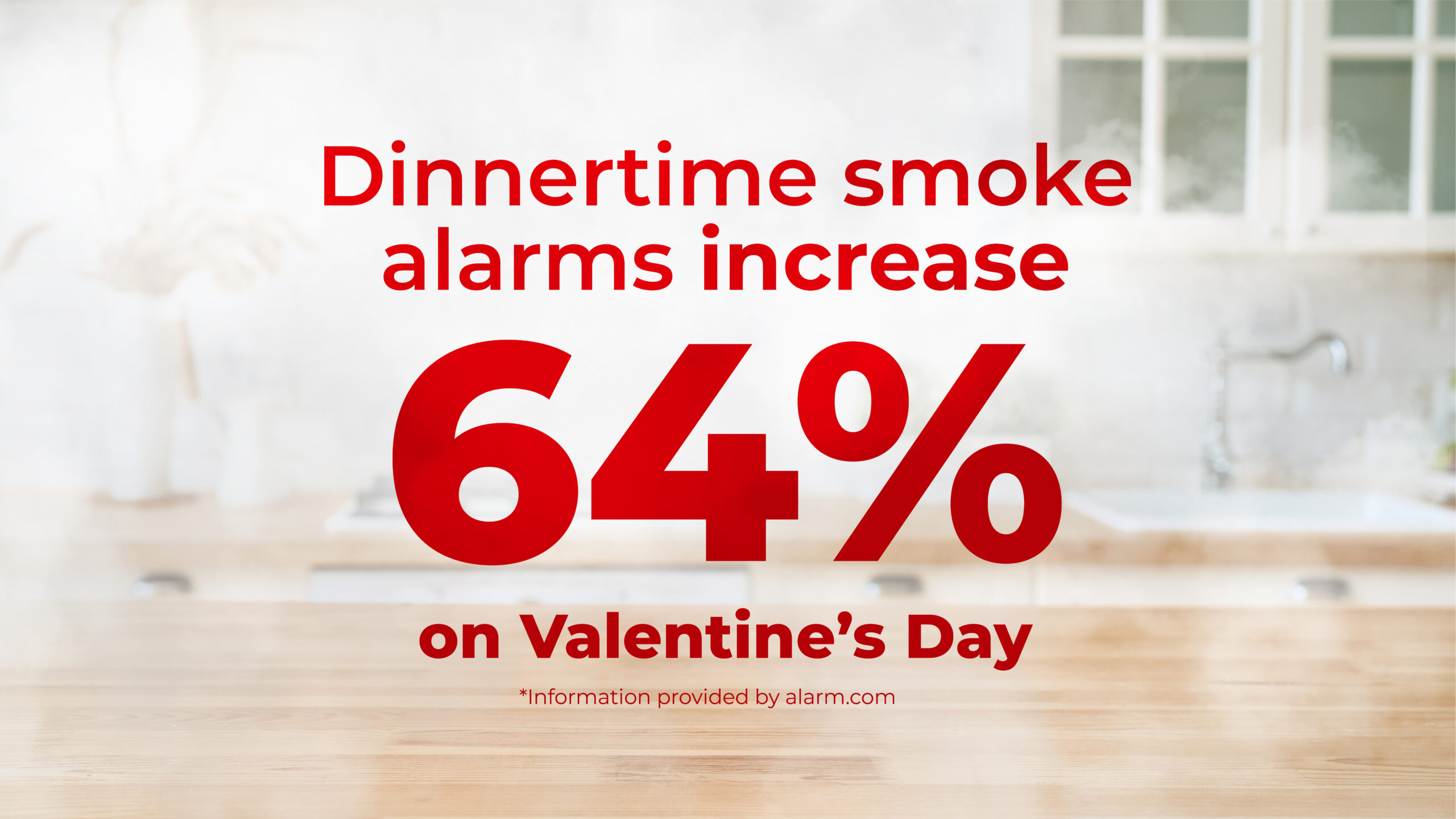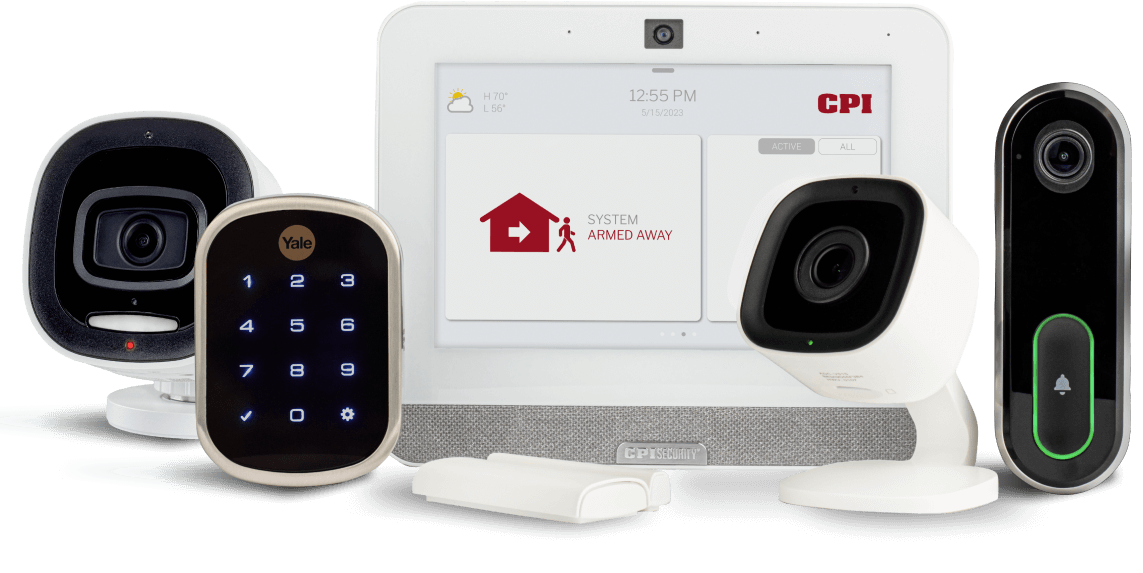Carbon monoxide is an odorless, colorless, tasteless gas that can be poisonous or even deadly. Unfortunately, carbon monoxide (CO) poisoning may be more common than you think. Did you know…
- 100,000 people visit the emergency room due to CO poisoning annually.
- More than 400 people die each year from CO poisoning.
The good news is that you can monitor the deadly gas by installing carbon monoxide detectors in your home.
However, there is still a range of common questions and misconceptions about CO. Below, we answer some of the more frequently asked questions and provide tips on keeping you and your family safe from carbon monoxide.
Frequently Asked Questions About Carbon Monoxide
What is Carbon Monoxide? Is it Heavier Than Air?
Carbon monoxide is known as a silent killer since it’s odorless, colorless, and tasteless. It’s slightly lighter than air, but not enough to rise to the ceiling of a room. Instead, it disperses itself, mixing with the air and spreading evenly throughout a space.
These traits are part of what makes CO so dangerous. It is a poisonous, invisible gas that is undetectable to your nose or eyes and mixes into our normal safe air. Hence the importance of CO detectors.
CPI Safety Tip: It is vital to have working carbon monoxide detectors throughout your home. Many sources recommend placing them at least five feet above the floor or on the ceiling. However, it depends on your home and the location of certain appliances or vents. At CPI Security, our security experts know the guidelines and best practices for installing CO detectors. They’ll work with you and your unique home to best customize the system that meets your needs.
What’s the Difference Between Carbon Monoxide and Carbon Dioxide?
Let’s take it back to science class. The technical difference between carbon monoxide (CO) and carbon dioxide (CO2) is that CO contains one carbon atom and one oxygen atom. Whereas CO2 contains one carbon atom and two oxygen atoms.
CO2 is natural produced by organisms (like us humans) and consumed by plants, which in turn produce oxygen. Carbon monoxide, on the other hand, is manmade and produced by the incomplete burning of organic matter.
Unlike CO, CO2 does not pose any threat or risk of poisoning inside your home.
What Causes Carbon Monoxide?
The burning of any type of fuel results in carbon monoxide. This includes gasoline, propane, and wood. That means devices like furnaces, gas ranges/stoves, and water heaters all create carbon monoxide. When those fuel-consuming appliances run in a closed or partially closed space, a dangerous amount of CO can build up to unsafe levels.
To prevent CO buildup and potential CO poisoning:
- Install working CO alarms throughout your home.
- Don’t run a generator or other gas-powered equipment inside your home.
- Ensure that your gas equipment and appliances are properly vented and allow air to pass through. This may require a qualified technician to ensure that they are unblocked.
- Never use a gas oven as a source of heat for your home.
CPI Safety Tip: CO can also be produced by fireplaces, generators, or even gas-powered clothes dryers. Be sure to have all of your appliances regularly serviced to prevent harmful CO leaks.
What to Do if a Carbon Monoxide Alarm Goes Off
If a CO alarm goes off in your home, take action immediately! Ignoring an alarm can lead to poisoning, hospitalization, and even death. Even brief exposure to CO can lead to health complications.
If you have a CPI Smart Security System and your alarm goes off:
Our 24/7 professional monitoring team will act quickly to verify the emergency with Real Time Response. Here’s how that works.
- If triggered, the CPI Carbon Monoxide Detector not only alarms you in the house, it also sends an alert to our monitoring station.
- The monitoring operator comes over your two-way speaker and warns those in your home of dangerous CO levels.
- While doing so, they dispatch authorities on your behalf so you can focus on evacuating your home safely.
- As you evacuate, our team will stay in contact with you during the alarm, making sure you are safe and informed every step of the way.
Once you have safely left your home, do not reenter until emergency responders have confirmed that it is safe.
Depending on the devices in your CPI Security system, you can also create automations that will turn on lights and unlock your doors automatically in the event of a CO or smoke alarm. This makes a more obvious exit route for you and your family members.*
If you do not have a CPI Smart Security System and your alarm goes off:
Always assume that it has gone off because it has detected an unsafe level of CO gas. Everyone should leave the home immediately, including any pets.
Once you have left, call 911 and do not reenter the home until emergency responders give the all-clear.
CPI Safety Tip: If you are unable to leave the building for any reason, immediately open all doors and windows, and turn off all stoves, grills, or any fuel-burning device while you’re waiting for emergency responders to arrive.
What Are the Signs & Symptoms of CO Poisoning?
CO poisoning occurs when a person absorbs too much carbon monoxide. The gas builds up in their bloodstream, displacing oxygen in the red blood cells. This can cause a wide range of symptoms, including:
- Headache
- Weakness
- Dizziness
- Vomiting
- Stomach Issues
- Chest Pain
CPI Safety Tip: Unfortunately, if someone is sleeping, they can die from CO poisoning before experiencing any symptoms or even waking up. Be sure to have a carbon monoxide alarm in your bedroom so that it can help wake you up in case of an emergency.
Other Commonly Asked CO Questions
How Many Carbon Monoxide Detectors Do I Need?
You need at least one for each floor of your home, including the basement. It’s also recommended to have extra CO detectors where high levels of CO are more likely to be produced. This includes just inside the home from the garage door entrance, in the kitchen, or near fireplaces. Having a CO detector in your bedroom is recommended as an added layer of protection.
Will a Carbon Monoxide Detector Detect a Different Gas Leak?
No, it only detects carbon monoxide.
Does Propane Produce Carbon Monoxide?
Yes, the burning of propane does produce carbon monoxide.
Do Electric Heaters Produce Carbon Monoxide?
No, because they do not burn any fuel and are entirely electrically powered, they do not produce CO.
Does Carbon Monoxide Smell Like Nail Polish?
No, carbon monoxide is completely odorless. The smell of nail polish could indicate a leak in the refrigerant lines of a refrigerator or an air conditioning unit. Call a local expert if you experience this issue.
Can Dogs Smell Carbon Monoxide?
No, dogs can’t smell CO. Which means that they are just as defenseless as humans. As a reminder, always evacuate your pets if your CO alarm goes off.
Can You Get Carbon Monoxide Poisoning From an A/C Unit?
Technically, no. Air conditioners don’t produce carbon monoxide because they don’t burn fuel. Therefore, you can’t get CO poisoning from them.
However, heaters can contribute to CO poisoning. Check your Ac and heating equipment to see if it is electric or gas. Any unit that utilizes gas—weather it is a split or packaged system—runs the risk of a CO leak. If you’re unsure how your system works, have a certified expert inspect it.
Can You Get Carbon Monoxide Poisoning From a Gas Stove?
Yes. Gas stoves emit carbon monoxide when in use. Be sure to increase the ventilation by using the range hood and opening nearby windows if possible.
How Can You Tell if Your Furnace is Leaking Carbon Monoxide?
There can be a few signs of this.
- Black, brown, or yellow soot stains around the furnace.
- CO is odorless, but if the furnace is leaking, it may give off a burning, overheating, or exhaust-like smell.
- If the furnace has a yellow flame instead of a blue one.
- Heavy condensation around the windows where the furnace is installed.
Do Candles Produce Carbon Monoxide?
Yes, but it is a very small amount. Even the mildest airflow will keep the CO from a candle from reaching dangerous levels.
Do Electric Dryers Produce Carbon Monoxide?
No. Electric dryers do not burn any gas or fuel, so they produce no CO.
At the end of the day, while there may be many questions about carbon monoxide, one thing is certain—the best course of action when it comes to protecting your family from CO is to add carbon monoxide detectors to your home’s smart security system.
*Note: This requires rules that must be set up by the customer. Additional home automation devices required. Automation features can be programmed from your computer or mobile device.
Source: CDC.gov, “Carbon Monoxide Poisoning.”




